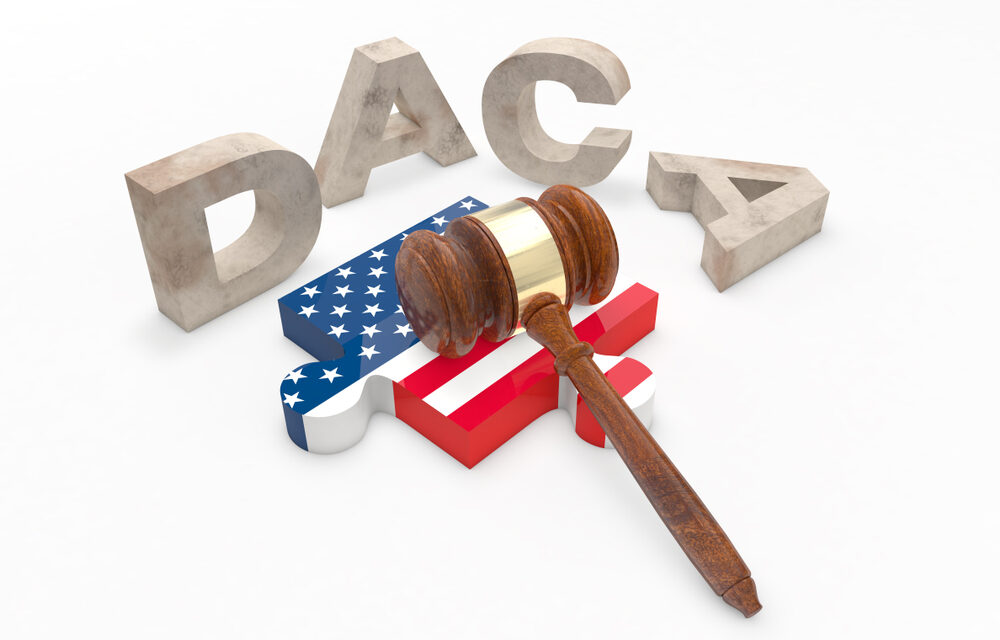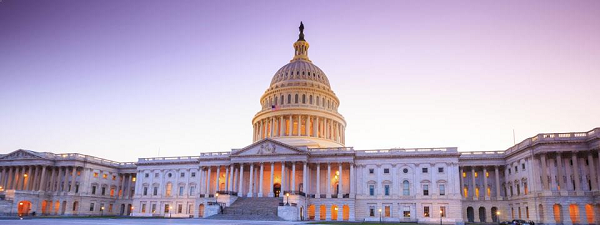AILA proudly welcomes this blog post from Diversity, Equity, and Inclusion Committee Law Student Scholarship recipient Brenda Quintanilla, part of a series intended to highlight the important ways in which diversity, equity, and inclusion inform immigration law and policy. More information about AILA’s DEI Committee and its important work is available on AILA’s website
I was born in El Salvador in 1997 and I am a recipient of the Deferred Action for Childhood Arrivals (DACA) program. My nephew, a first-year student at one of the UC colleges, was born in El Salvador in 2004 but is not a DACA recipient. Though we are only a few years apart, he does not have the same protections that I do. I have work authorization, a driver’s license, and a social security number. Unfortunately my nephew, and an additional 2 million others who entered the U.S. as children, do not.
Legal and Historical Timeline
Immigration reform has long been used as a political gamble. The DREAM Act, initially introduced in 2001, was intended to create a process for immigrants who were brought here as children to apply for conditional residency and later permanent residency. The Act would have required applicants to have entered the U.S. before the age of 16, show continuous physical presence in the U.S. for five years, and obtain a high school diploma from the U.S. (or a GED). 22 years later and the DREAM Act has failed to pass despite different versions, several offered in a bipartisan manner. The only current protection afforded to young undocumented immigrants is DACA, but this policy’s fate is uncertain.
President Obama introduced Deferred Action for Childhood Arrivals (DACA) in 2012. Intended to protect those who would have benefited from the DREAM Act, DACA provides deferment from deportation and a work permit for a similar group: people who entered the United States before they were 16 and under 31 as of June 15, 2012. This status must be renewed every two years. Additional requirements include continuous physical residence in the United States since June 15, 2007, currently in school or a high school grad (or obtained a GED or is an honorably discharged veteran).
DACA has faced numerous challenges since its inception, most recently by the Trump administration and conservative states like Texas. In 2017, Elaine Duke, then-secretary of DHS, rescinded the policy. In response, the U.S. Supreme Court heard Department of Homeland Security v. Regents of the University of California in June 2020, for which the majority held that the Trump administration failed to provide a well-reasoned explanation grounded in the Administrative Procedure Act (APA) for ending the policy. Shortly after, Chad Wolf, acting secretary of DHS, modified the policy for applicants to renew their status every year. USCIS renewal fees for DACA total $495. This meant that applicants had to pay $495 every year as opposed to every two years to maintain their protected status. This change prompted multiple lawsuits, one of which resulted in the court determining that Wolf was improperly appointed, thus invalidating this change. In December 2020, the court ordered DACA to be fully reinstated to its original terms. However, following the June 2020 decision, litigation brought forth by a group of Republican state attorneys general that had been paused, resumed. Texas and other states argued that DACA violated the Immigration and Nationality Act (INA), the APA, and imposed costs on the states. On July 16, 2021, U.S. District Judge Andrew Hanen held that DACA is unlawful and issued an injunction to vacate the original policy, but allowed individuals who obtained DACA on or before July 16, 2021 to maintain their status. The Biden administration appealed this decision in the U.S. Court of Appeals for the Fifth Circuit, but the case is still pending. DACA is in limbo, just like the lives of many undocumented and DACAmented people.
The Numbers Speak for Themselves
As of March 31, 2022, there are 611,270 DACA recipients across the U.S., the highest number from Mexico, El Salvador, and Guatemala. Given the eligibility requirements for DACA, the average DACA recipient is about 26 years old. There are 23 states that house more than 10,000 DACA recipients. According to surveys of DACA recipients, more than half upgraded jobs after receiving status with better pay and benefits and closer alignment to their education and training. In 2021, during the height of the COVID-19 pandemic, more than three quarters of DACA recipients were deemed essential workers. This included 45,000 health care workers providing patient care and maintaining facilities, 20,000 educators, and 100,000 food supply workers. Households with DACA recipients pay $6.2 million federal taxes and $3.3 billion state and local taxes each year. About 68,000 homes are owned by DACA recipients, leveraging an annual $760 million in mortgage payments.
In 2018, the American Community Survey (ACS) indicated that undocumented students account for more than 450,000 students in higher education, 216,000 of them are eligible for DACA. DACA-eligible students are primarily found in five states – California, Texas, Florida, New York, and Illinois – but there are nearly 50,000 others throughout the rest of the country. Though undocumented and DACA-eligible students demonstrate successful rates of postsecondary education, many struggle to financially afford it because they do not qualify for federal financial aid. However, 19 states including the District of Columbia, offer in-state tuition and financial aid to undocumented and DACAmented students who meet residency requirements. Research shows that these kinds of policies reduce high school dropout rates by as much as 14%.
These numbers mean very little if policy and legislation is not reflective of the social, political, and economic benefits that undocumented people and DACA recipients offer. We need the law to protect the millions of individuals that are keeping this country running. However, the 2020 decision in Department of Homeland Security v. Regents of the University of California was narrow (5-4), and now that the Supreme Court’s make up has shifted, the fate of DACA recipients is even more uncertain.
What Now?
My nephew submitted his DACA application shortly before the July 16, 2021, ruling. His application is in limbo and has not been processed. Yet he is more than halfway done with his first year at a highly regarded California public university and will work, pay taxes, and contribute to society just as his peers with U.S. citizenship will.
America has a gambling problem and undocumented/DACAmented people are treated like poker chips. The only real solution is legislation, but Congress seems to be stuck playing a game with no end in sight.
Despite what many well-meaning people might think, we have NO easy way to get out of this limbo and feel safe here, in our home. Home is America, we grew up here. Sometimes it seems like there is no way forward. But, I refuse to give up hope. We’ve gotten this far through community organizing and advocacy. We will continue to pick up the crumbs left by the DREAM Act and fight for DACA, ourselves, and our community.







